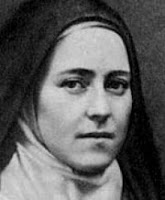



She is venerated as “daughter of Allah” in Islamic circles, with her own shrine in Cairo. Her relics have circled the globe, including Iraq, Siberia and Cameroon. Thérèse of Lisieux still influences and fascinates millions, reaching a world unimagined by the French bourgeois Catholicism from which she emerged. Removed in time by more than a century, St. And then, there she was: pasted to the wall near a bare cross, a small, celebrated photo of a young Carmelite nun, the only human face this man would see during long hours of solitary contemplation at La Grande Trappe. Adding substantially to our knowledge and appreciation of this immensely popular and attractive figure, this book should appeal to many general readers aswell as to scholars and students of modern Catholic history.At a recent viewing of the film “Into Great Silence,” I was mesmerized as the camera circled the austere perimeter of a new Carthusian novice’s cell and oratory, stripped of any comforts or signs of individuality. Finally, he offers a new understanding of Therese as a theologian for whom love, rather than doctrines and creeds, was the paramount value. He delves into the French medical literature of the time, in an effort to understand how the tuberculosis of which she died at the age of 24 was treated and lamentably mistreated. He gives close attention to her poetry and plays usually dismissed as undistinguished and argues that they have great value as texts by which she addressed and informed her Carmelitecommunity. He charts the development of Thereses career as a writer. He draws extensively on the correspondence of her mother and documentsher influence on Thereses autobiography and spirituality. He explores the dynamics of her family life and the early development of her spirituality. As a consequence he is able to offer a much fuller and more accurate portrait of the saint's life and thought than his predecessors. Nevin has gained access to many untapped archival materials and previously unpublished photographs. Therese has been the subject of innumerable biographiesand treatises, ranging from hagiographies to attacks on her intelligence and mental health. As daughter of Allah, she is venerated widely in Islamic cultures. Having long transcended national and linguistic boundaries, she has crossed even religious ones. Her autobiography Story of a Soul has been translated into sixty languages. Pope John Paul IIdescribed her as a living icon of God. Therese is not only one of the most beloved saints of the Catholic Church but perhaps the most revered woman of the modern age.

A Carmelite nun, doctor of the church, and patron of a score of causes, she was famously acclaimed by Pope Pius X as the greatest saint of modern times. Therese of the Child Jesus and the Holy Face, is popularly named the Little Flower. Therese of Lisieux (1873-1897), also known as St.


 0 kommentar(er)
0 kommentar(er)
